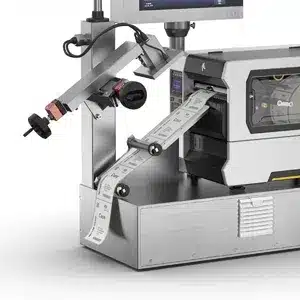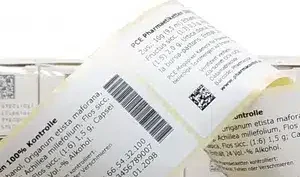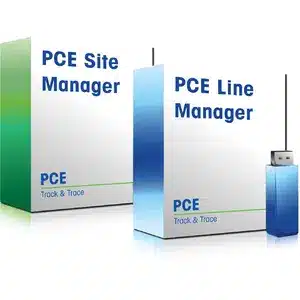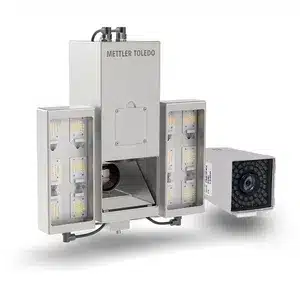Casa > Soluções > Conformidade regulatória > Ensaios clínicos para MEs
Atender aos rigorosos requisitos de rotulagem associados a ensaios clínicos para medicamentos experimentais (IMPs) com precisão e agilidade.
Impressão e verificação de etiquetas para medicamentos experimentais (MEs) usados em estudos clínicos é um desafio. Mas com a segurança dos participantes, a conformidade regulatória, as necessidades de rastreamento e a integridade dos dados do estudo clínico em jogo, não há espaço para erros de rotulagem.
As normas de rotulagem da UE para medicamentos experimentais (MEs) usados em estudos clínicos são rigorosas. A conformidade com elas pode ser complexa e dispendiosa devido aos diversos fatores que podem afetar o conteúdo do rótulo. Entre eles: o projeto, a fase e o local do estudo clínico; alterações na dosagem, datas de validade e outros componentes do rótulo que surgem entre ou durante os estudos clínicos; e requisitos de idioma específicos do país.
O Marcação e verificação manual T11, parte da linha Systech/PCE de soluções de rastreamento e monitoramento, ajuda a superar os desafios com uma solução econômica e completa para impressão e verificação de rótulos para MEs usados em estudos clínicos. Flexível, adaptável e confiável, ele garante que todas as informações necessárias do rótulo estejam presentes, legíveis e precisas, ajudando a manter a segurança do sujeito e a integridade dos dados e a atender aos requisitos de conformidade.
Embora os tamanhos dos lotes de etiquetas de ME possam aumentar de uma fase clínica para outra, eles ainda são normalmente pequenos. As alterações frequentes no conteúdo das etiquetas geralmente exigem a impressão e a verificação just-in-time necessárias.
Considerações de custo, uso limitado e espaço insuficiente tornam impraticável o investimento em um sistema de etiquetagem em larga escala no local. A terceirização da produção e da verificação de etiquetas ou a vinculação de um sistema local existente para pequenas tiragens pode ser cara e ineficiente.
A T11 oferece uma alternativa econômica. Ela integra impressão ágil e recursos de verificação precisos em uma solução única e multiuso.
Com um design ergonômico e que economiza espaço, o T11 pode ser usado em ambientes pequenos e confinados. Ele cabe em uma mesa ou em um carrinho, de modo que pode ser facilmente transportado para diferentes locais, conforme necessário. Ele também oferece recursos que permitem que seja usado para serialização de rótulos para rastrear e acompanhar os MEs durante todo o ciclo de vida do estudo clínico, bem como para rotulagem de MEs.


A flexibilidade do T11 permite que ele imprima e verifique rapidamente o conteúdo da etiqueta. Isso inclui os requisitos de etiquetas IMP especificados na Regulamento de Ensaios Clínicos da União Europeia 536/2014 (EU CTR)que entrou em vigor no final de janeiro de 2022 e substitui o Diretiva de Ensaios Clínicos da União Europeia (EU CTD) 2001/20/EC.
Os ensaios clínicos apresentados sob o CTR da UE devem estar em conformidade com os novos requisitos. Os ensaios clínicos existentes autorizados sob o EU CTD podem manter sua rotulagem original.O T11 pode acomodar qualquer estrutura regulatória aplicável, bem como quaisquer alterações de rótulo que surjam.
Ele suporta formatos variáveis para lidar com o conteúdo exato que deve aparecer nos rótulos de IMP. Basta fornecer o conteúdo aprovado da etiqueta em conformidade com o EU CTR, que é atribuído dinamicamente aos modelos de PDF. À medida que as etiquetas são impressas, a câmera integrada da T11 verifica sua precisão em relação ao PDF aprovado.
Embora a CTR da UE padronize a maior parte do conteúdo dos rótulos dos MEs usados em estudos clínicos, os rótulos devem ser escritos no idioma local do centro do estudo, bem como em qualquer idioma adicional exigido pelas regulamentações locais. Os rótulos dos MEs usados em estudos clínicos que ainda estejam operando sob a DTC da UE também podem estar sujeitos a outros requisitos locais ou específicos do país.
O T11 pode se adaptar rapidamente aos requisitos de rotulagem de países individuais, bem como de locais de ensaios clínicos. Tudo o que é necessário é uma prova em PDF do rótulo aprovado pelo cliente.
A T11 também pode ser executada no modo de descolamento para impressão just-in-time com verificação de etiquetas para rápida reetiquetagem ou necessidades adicionais de etiquetagem que possam ocorrer devido a requisitos específicos do país ou do local. O modo de rebobinamento está disponível para produzir etiquetas aprovadas para aplicação posterior de bobina a bobina.


A T11 vem com duas opções de câmera integradas - uma câmera inteligente ou uma câmera de alta resolução - para proporcionar a verificação ideal das informações da etiqueta, dependendo do tamanho da etiqueta e da resolução de impressão. Ambas podem ser usadas para três tipos de verificação: verificação de presença, verificação de qualidade e verificação de referência.
À medida que as etiquetas são impressas, a câmera compara cada etiqueta com um PDF da etiqueta aprovada pelo cliente para confirmar que todas as informações necessárias estão presentes, legíveis e corretas. Se for detectado um erro, o operador é notificado e deve confirmar que a etiqueta defeituosa foi removida antes de o sistema continuar a produção.
Além disso, o software opcional PCE Line Manager (PLM) pode exibir a origem dos defeitos para que eles possam ser mitigados. Os recursos de inspeção visual precisa do T11 também ajudam a garantir a precisão quando usados com software para serialização de etiquetas.
Descubra como o Marcação e verificação manual T11 combina eficiência e acessibilidade, transformando a maneira como os rótulos são impressos e verificados para uso em MEs em estudos clínicos.
Produção Os rótulos de ensaios clínicos estão repletos de desafios. O primeiro passo para superá-los é entendê-los.
O T11 Mark & Verify oferece uma solução econômica para a impressão e verificação de etiquetas para os MEs usados em estudos clínicos
De mudanças frequentes de rótulos a necessidades de impressão just-in-time, a produção e a verificação de rótulos para uso em estudos clínicos podem ser complicadas.